This plant is one of the few edible Hollies if not the only one, but not the berries as they will make you very sick. Its species is known as Ilex vomitoria so eating it would give you some pause. But there are indeed parts of this plant with special preparation can make a potent tea. Just leave the berries for the birds, they love them. I recently saw a woodpecker feeding on them.
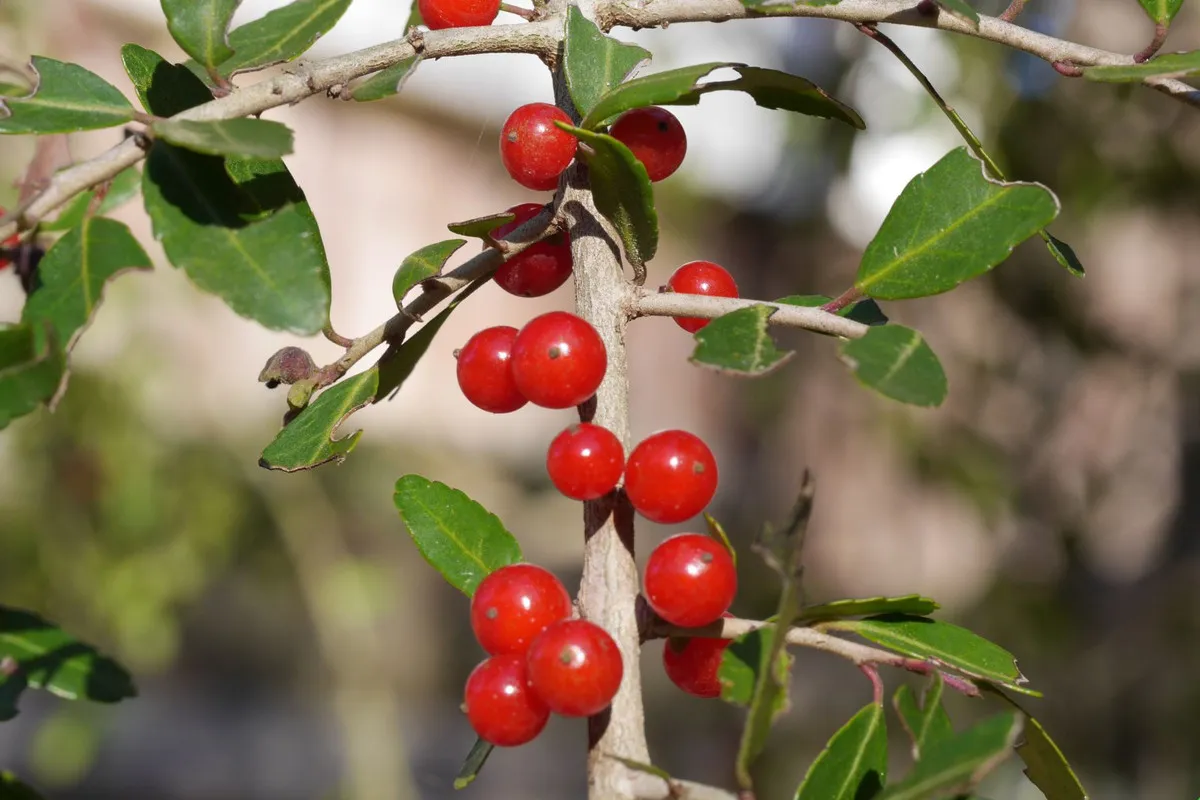
 Camera Model Camera Model | Lumix GH3 |
|---|---|
 Lens Lens | Olympus MSC ED M. 60mm Macro lens |
 Filter Filter | none |
 Aperture Aperture | f/9 |
 Shutter Speed Shutter Speed | 1/125 sec |
 Film Speed Film Speed | 400 |
 Spectrum Spectrum | Visual Light |
 Wavelength Wavelength | 380 through 700 nanometers |
 Location Location | North Georgia USA. |
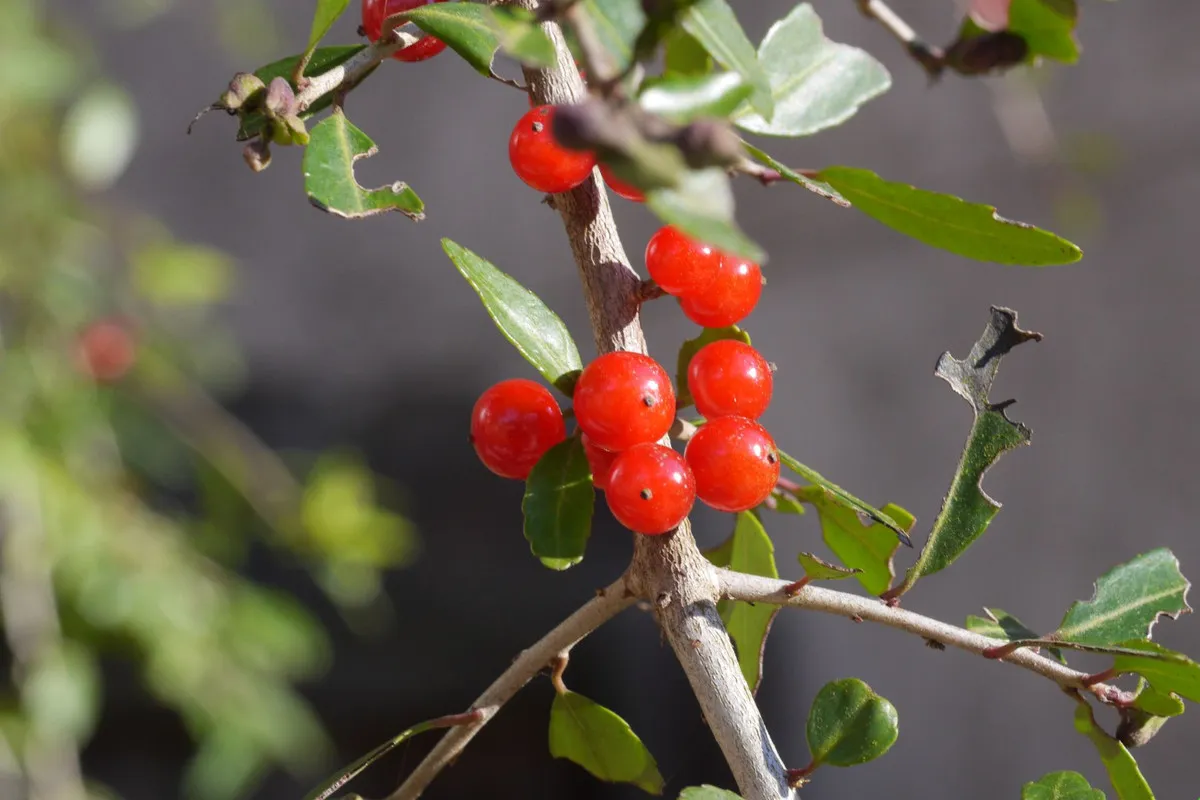
This plant is mostly found south of me, but I purchased a few years back and they are now some of the tallest plants in my garden. One of them is probably close to 20 feet tall, and the other is around 10 feet as its more in the shade.
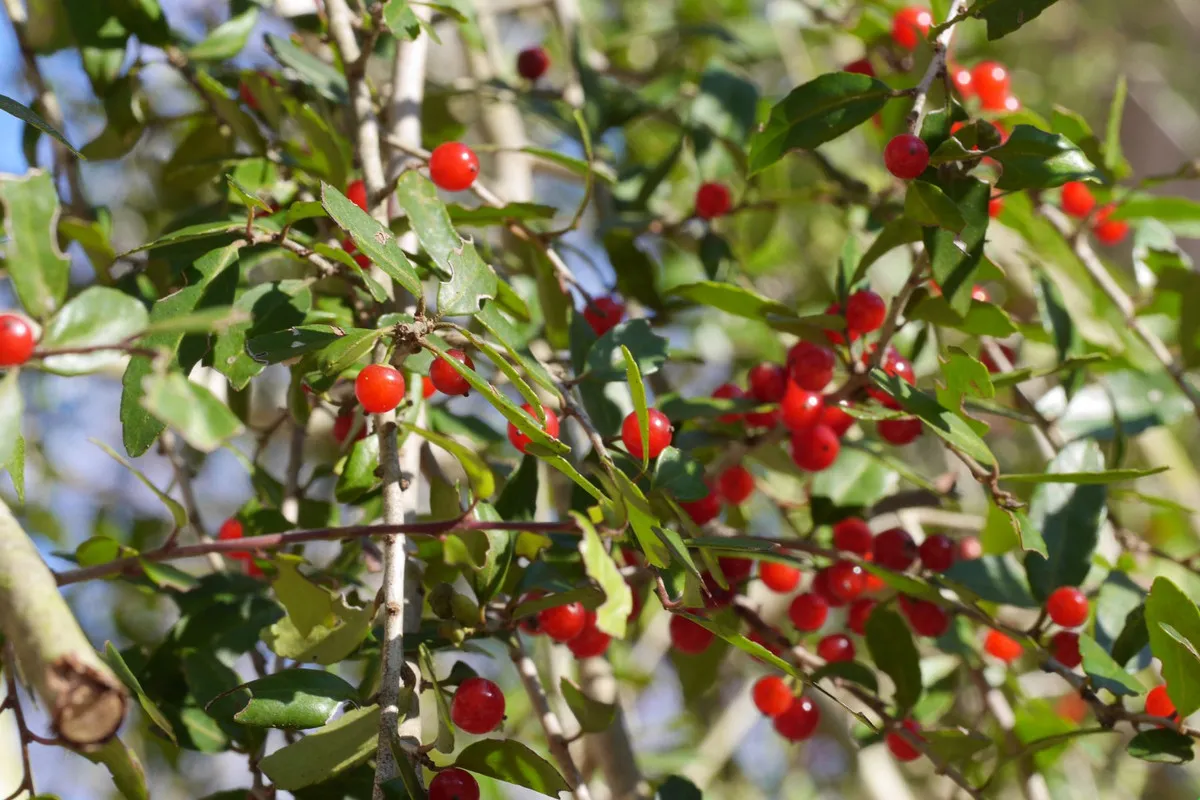
Seems like this holly is constantly producing berries, which is great for the birds but I cannot do anything with them. And I must be careful to remove them during my processing of the leaves to make tea. You can air dry the leaves and make tea leaves from them which pack more caffeine than black tea. I have made some and had many cups of Yaupon Holly tea, its an early flavor but quite unique.

All of the other hollies do not contain caffeine besides the Yaupon Holly, and other Hollies are not edible at all.
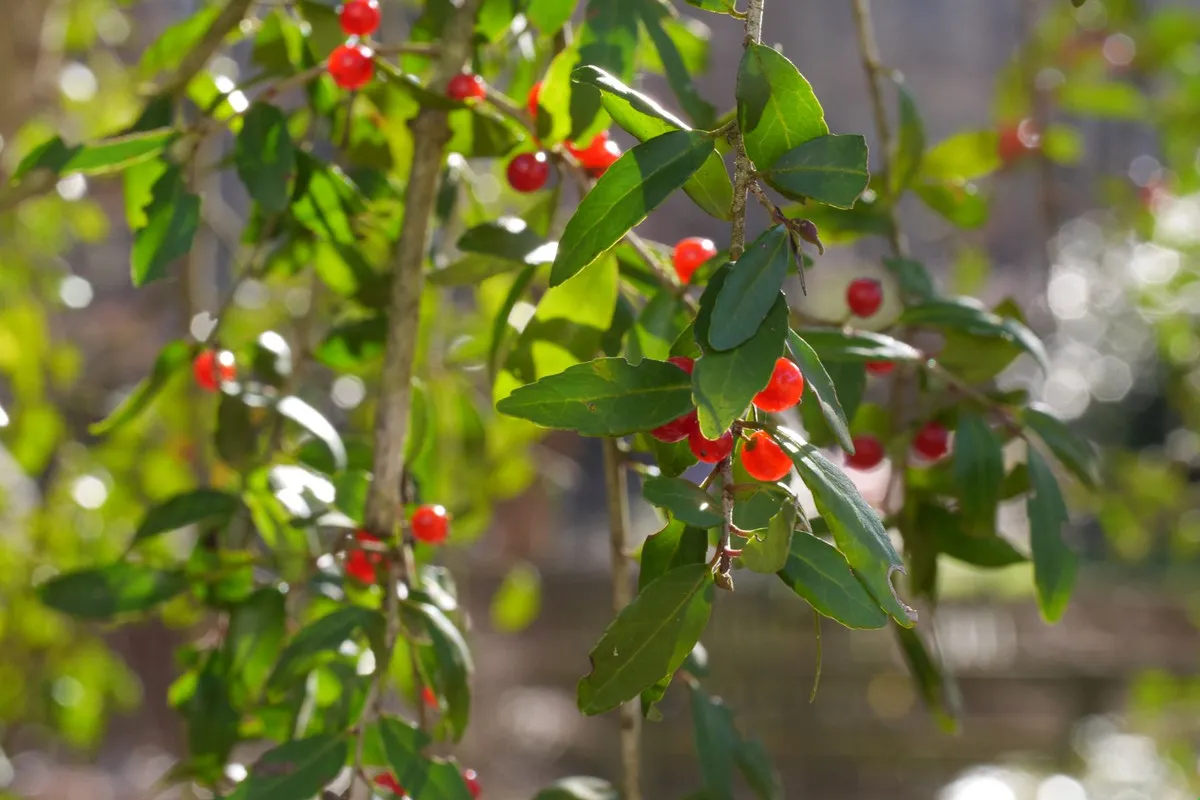
I strip off the berries when collecting breaches of these plants, I just want the leaves.
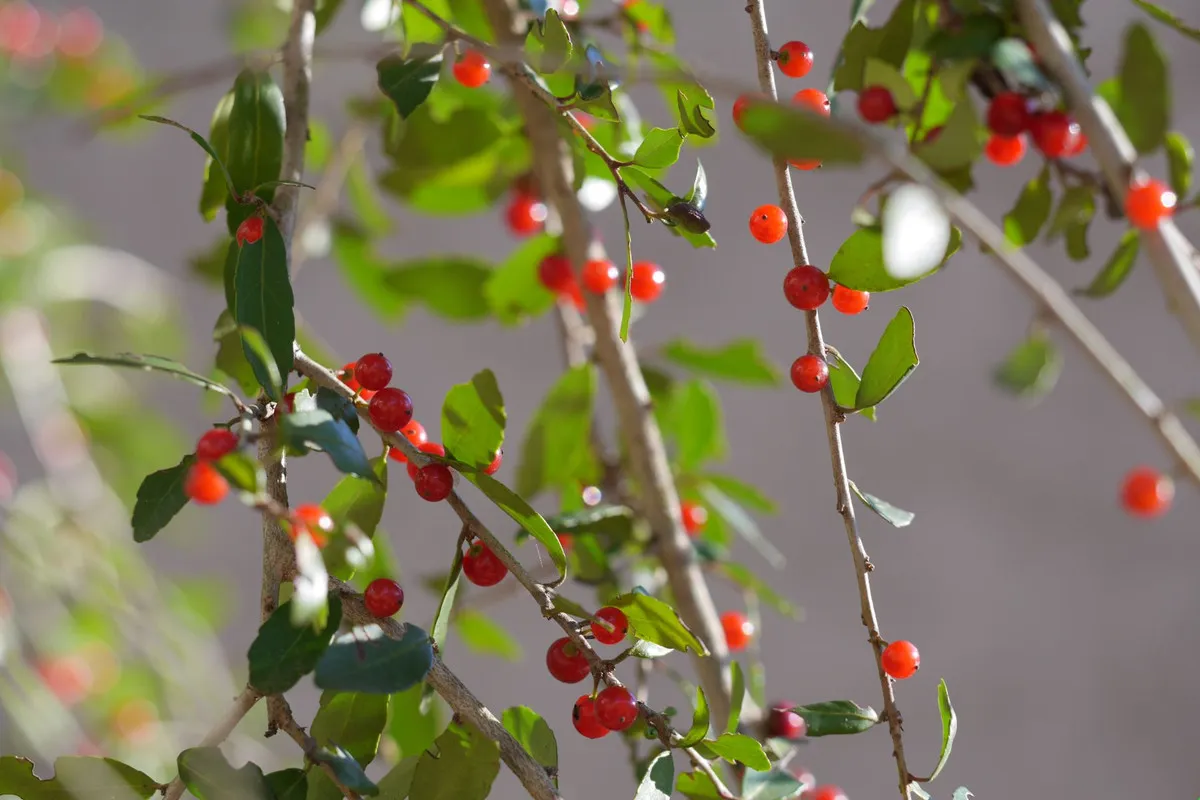
And since this plant is quite fast growing, taking some branches off is not a big deal to the Yaupon Holly.

Taking a step back we can see how busy it is, just packed with berries. You can also see some 275 paracord helping to keep it growing straight up. A few years back a heavy snow storm caused this plant to almost uproot itself. So I tied it to a fence and will hopefully stop it from sagging over next time we get alot of snow.
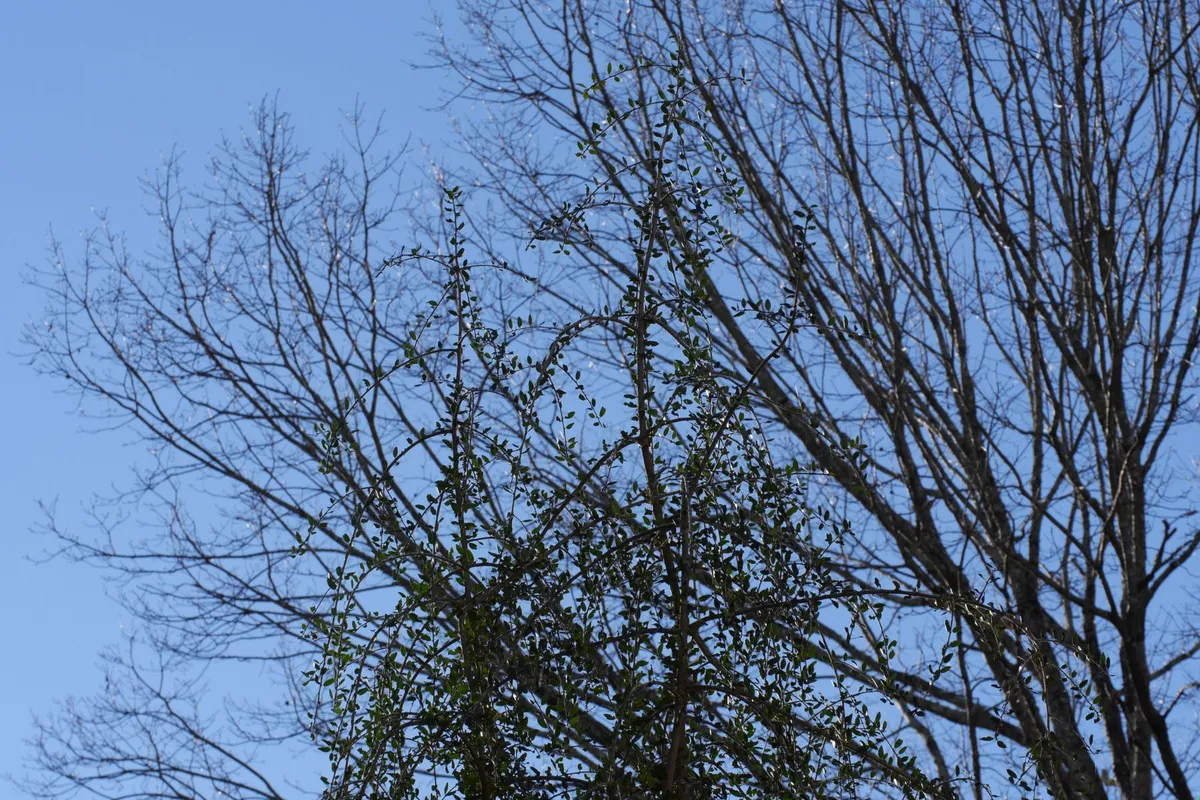
Its reaching high up, I wonder how much taller it will get. I tend to top it every few years and then use the leaves for tea.